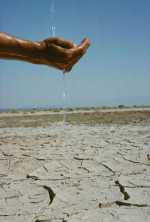Another California County Declared Drought Disaster

The USDA has designated Kings County in California as a primary natural disaster area due to damages and losses caused by the recent drought. On Feb. 27, 10 other counties in California received the same designation. Those counties are Fresno, Inyo, Kern, Lassen, Los Angeles, Modoc, Mono, Riverside, San Bernardino, and Tulare.
“Our hearts go out to those California farmers and ranchers affected by recent natural disasters,” said Agriculture Secretary Tom Vilsack. “President Obama and I are committed to ensuring that agriculture remains a bright spot in our nation’s economy by sustaining the successes of America’s farmers, ranchers, and rural communities through these difficult times. We’re also telling California producers that USDA stands with you and your communities when severe weather and natural disasters threaten to disrupt your livelihood.”
Farmers and ranchers in counties contiguous to the primary disaster counties are also eligible for natural disaster assistance. The earlier primary disaster designation of 10 counties applies to 17 additional contiguous counties. The current Kings County designation makes the following five contiguous counties also eligible: Fresno, Kern, Monterey, San Luis Obispo, and Tulare.
All counties listed above were designated natural disaster areas today, March 13, making all qualified farm operators in the designated areas eligible for low interest emergency (EM) loans from USDA’s Farm Service Agency (FSA), provided eligibility requirements are met. Farmers in eligible counties have eight months from the date of the declaration to apply for loans to help cover part of their actual losses. FSA will consider each loan application on its own merits, taking into account the extent of losses, security available and repayment ability. FSA has a variety of programs, in addition to the EM loan program, to help eligible farmers recover from adversity.
Additional information is also available here.




